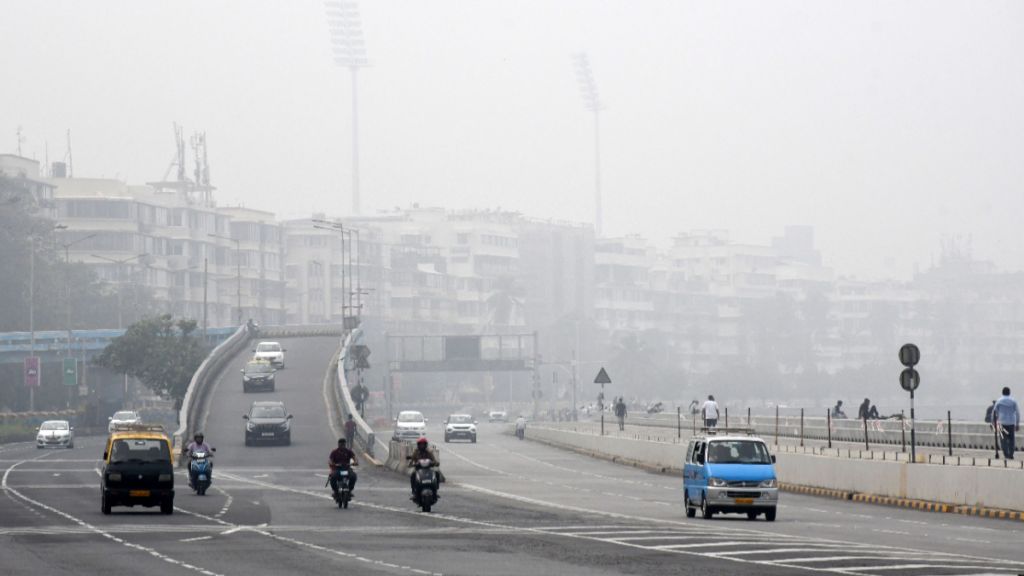
Mumbai: The city woke up to a thick layer of haze on October 2nd, raising concerns over the city’s deteriorating air quality. The poor air quality follows a pattern, with weather reports indicating rising humidity levels, thicker air, and low wind speeds of just 10 km/h, the lowest in recent weeks. This sudden shift has raised questions about whether the pollution spike is linked to air pollution or the ongoing withdrawal of the monsoon.
According to data from Awaaz Foundation, Mazgaon recorded an AQI of 113, Colaba 99, Deonar 105, Malad 101, Bhandup 94, Sewri 119, Chembur 91, Mulund 199, Bandra Kurla Complex (BKC) 112, and Vasai 126.
On September 7 #BlueSkiesForCleanAir Day, the Awaaz Foundation launched a project to provide health advisories based on official government data on air pollution. While Mumbai’s air quality had been acceptable since the launch, today marks the first time the AQI has exceeded 100 across multiple parts of the city.
Awaaz Foundation’s measurements focus on PM2.5 levels, which pose the greatest threat to public health. The foundation has now announced that they will issue daily air quality updates and health advisories throughout the winter and beyond.
Sumaira Abdulali, founder of the Awaaz Foundation, voiced concern over the sharp increase in AQI right after the monsoon ended. “The AQI has surged almost immediately after the rains stopped, well before winter has even begun. This is evident in the rising AQI levels across the city and the smog now blanketing Mumbai.
As we approach winter, a season when AQI typically worsens and has reached dangerous levels in recent years, pollution-generating activities like construction continue unchecked and even intensify, despite numerous reports and recommendations from the BMC and the government for mitigation measures.”
Air pollution in Mumbai is not limited to just one day of hazardous levels. According to Avinash Kumar Chanchal, campaign manager from Greenpeace Foundation, “The city’s pollution levels consistently exceed safe air quality standards throughout the year. Previous studies have identified vehicular pollution, industrial combustion, road dust, biomass burning, and the construction sector as major contributors to the city’s air pollution. Given the multiple sources of this crisis, the government must adopt a holistic, long-term solution and develop a plan that addresses these persistent, year-round contributors. One immediate step the government could take is to prioritize transportation for the masses over private vehicles by providing a sustainable, accessible, and efficient public transportation system that includes fare-free transportation for women.”
IMD Chief Scientist Sunil Kamble explained that a combination of weather conditions and the withdrawal of the monsoon has contributed to both low visibility and deteriorating air quality. “When wind speeds drop, it creates a system that reduces visibility. This phenomenon is especially common during the monsoon withdrawal, when wind patterns shift suddenly, and moisture lingers in the atmosphere, forming mist. This mist significantly reduces visibility, making it difficult to see beyond 3 to 4 kilometers. Additionally, as the rain ceases, pollution levels naturally rise. The ground dries quickly, stirring up dust, which further contributes to the spike in pollution.”
The current conditions, exacerbated by the shift in monsoon winds, have left Mumbai enveloped in a haze, causing both air quality and visibility to plummet. As the city heads towards winter, air pollution is expected to worsen, with construction activities and other pollution-generating activities continuing at full force.
The city’s residents and environmental experts alike are calling for immediate action to mitigate air pollution before the situation deteriorates further.